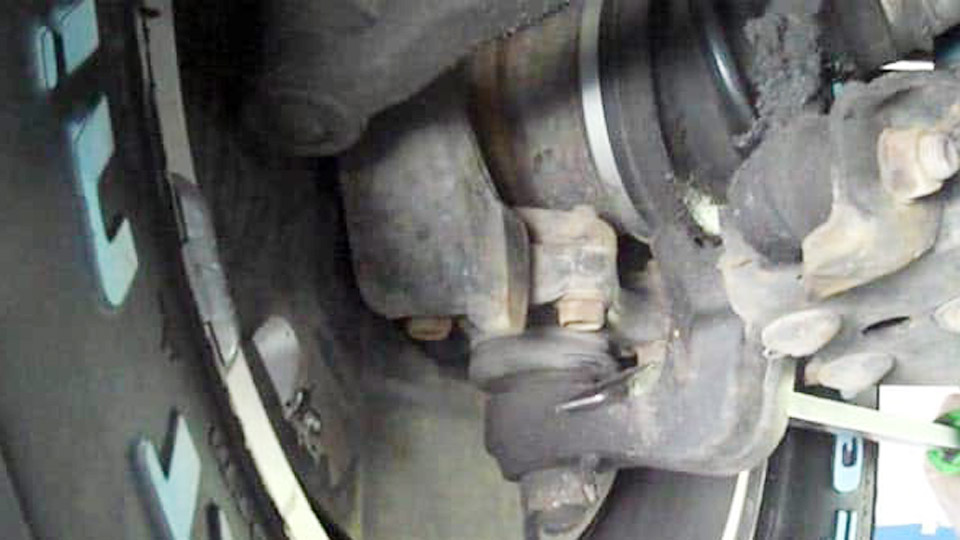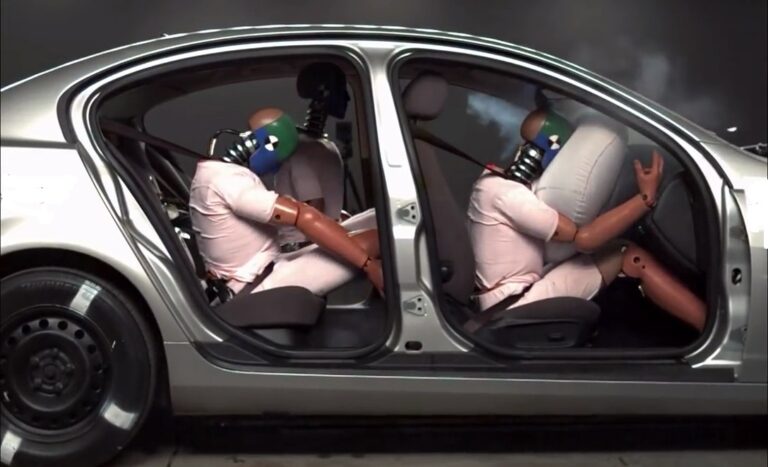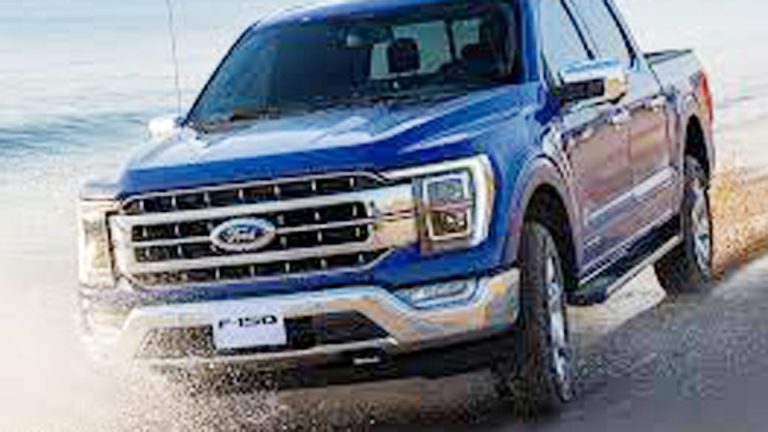The first time I heard a creaking noise when turning my old Toyota Camry, I was pulling into my driveway after a long day. It sounded like an old wooden ship rocking on the waves, and I couldn’t help but wonder, “Why does my car make creaking noises when I turn?” My stomach sank, imagining a pricey repair.
But after years of tinkering with my cars and helping friends diagnose similar issues, I’ve learned these sounds are often fixable with some know-how. Let’s troubleshoot this together, like we’re in my garage, so you can pinpoint the cause and get back to smooth, quiet drives.

Image by globalcarsbrands
What’s Behind That Creaking Noise?
A creaking noise when turning usually points to issues in your car’s suspension or steering system. It’s not always a major problem, but it’s a sign something needs attention. I’ve chased down creaks in my Camry and my brother’s Jeep, and each time, it was a lesson in listening closely and checking the right parts. The noise often comes from components that are dry, worn, or loose, and figuring it out starts with understanding what’s happening when you turn.
Why Turning Triggers Creaks
Turning puts stress on your car’s front wheels, steering, and suspension. My Camry’s creak was loudest during sharp turns, like parking, because parts like ball joints or bushings flex more then. When these components wear out or lose lubrication, they rub or bind, creating that eerie creaking sound. Noticing when and where the noise happens helps narrow down the culprit.
Common Causes of Creaking Noises When Turning
Here are the most common reasons I’ve seen for creaking noises, based on my own cars and helping friends. Each has unique signs to help you diagnose the issue.
Worn or Dry Ball Joints
Ball joints are pivot points in your suspension, connecting the steering knuckles to the control arms. When they’re dry or worn, they creak during turns. My Camry’s creak came from a dry ball joint—I noticed it after hitting a pothole, which probably sped up the wear. Greasing it helped temporarily, but replacement was the real fix.
Why it matters: Worn ball joints can affect handling or even fail, causing suspension issues. Regular greasing can prevent creaks, but worn ones need replacing to stay safe.
Dry or Damaged Bushings
Bushings are rubber or polyurethane pieces that cushion suspension parts, like control arms or sway bars. When they dry out or crack, they creak as metal parts rub together. My brother’s Jeep had a loud creak during turns, and we found cracked sway bar bushings. A quick spray of silicone lubricant quieted it, but new bushings were the long-term solution.
Why it matters: Dry bushings lead to noise and poor suspension performance. Lubricating or replacing them restores a smooth ride and prevents further damage.
Low Power Steering Fluid
Low or contaminated power steering fluid can cause creaking or groaning when turning. I helped a friend with a Ford Focus that creaked at low speeds. The fluid reservoir was nearly empty, and topping it off stopped the noise. A small leak meant it needed a mechanic’s attention later.
Why it matters: Low fluid strains the power steering pump, making steering harder and noisier. Checking levels regularly can catch this early.
Worn Strut Mounts or Jounce Bushings
Strut mounts sit at the top of your front struts, and jounce bushings cushion their movement. When they wear out, they creak during turns. I diagnosed this on my neighbor’s car—the creak was loudest when cold, and the strut mount bearing was shot. Replacing it fixed the issue.
Why it matters: Worn strut mounts affect alignment and handling. Fixing them early prevents tire wear and bigger suspension problems.
Loose or Worn Steering Components
A loose steering rack or tie rod ends can creak when turning. I once tightened a loose tie rod on my truck, which stopped a faint creak during low-speed turns. If the components are worn, replacement is needed.
Why it matters: Loose steering parts compromise control and safety. A quick inspection can catch this before it worsens.
Debris or Road Conditions
Sometimes, the creak isn’t mechanical. Dirt or small rocks in the suspension or wheel wells can mimic creaking. I once spent an hour chasing a creak in my wife’s car, only to find gravel stuck in the wheel well. Cleaning it out solved the problem.
Why it matters: Debris is an easy fix, but ignoring it can cause wear. A quick check can save you from unnecessary worry.
Diagnosing the Creaking Noise
Pinpointing the cause takes a bit of detective work. Here’s how I approach it, based on years of trial and error.
Listen to the Noise
Pay attention to the sound’s pitch and timing. Is it a high-pitched creak or a low groan? Does it happen only during sharp turns or at low speeds? My Camry’s ball joint creaked rhythmically during parking, while my brother’s bushings creaked steadily. Drive slowly in a parking lot, turning both ways, to isolate the sound.
Inspect Visually
Jack up the car (use jack stands for safety!) and check the suspension and steering components. Look for cracked bushings, dry ball joints, or grease leaks. I found my Jeep’s bushing issue by spotting cracks in the rubber. Check the power steering fluid under the hood—low levels are a quick clue.
Test the Suspension
With the car jacked up, push and pull on the wheels to check for play. I diagnosed a loose tie rod this way—it creaked when I wiggled the wheel. Bounce the car’s front end to listen for creaks from struts or bushings. This helped me confirm my neighbor’s strut mount issue.
Drive with Purpose
Take a short test drive, varying your turns—sharp, gentle, left, and right. My Camry’s creak was louder turning left, pointing to a specific ball joint. Note if the noise changes with temperature or road conditions, as cold weather can make strut mounts creak more.
Fixing the Creaking Noise
Once you’ve got a suspect, here’s how I’ve fixed these issues, with tips to keep it safe and straightforward.
Greasing or Replacing Ball Joints
If ball joints are dry, greasing them can stop the creak temporarily. I used a grease gun on my Camry, which worked for a few months. If they’re worn (check for play or grinding), replace them—about $30-$60 each. I’d recommend a shop for this unless you’re comfortable with suspension work.
Why it matters: Lubricated or new ball joints ensure smooth handling and prevent suspension failure. It’s a small fix with big benefits.
Lubricating or Replacing Bushings
For dry bushings, a silicone-based lubricant can quiet the noise. I sprayed my brother’s Jeep bushings, and the creak stopped for weeks. If they’re cracked, replace them ($20-$50 per set). It’s a DIY job if you have a wrench and some patience.
Why it matters: Fresh bushings restore suspension comfort and quietness. Neglecting them can wear out other parts.
Topping Off Power Steering Fluid
Check the power steering reservoir under the hood. If it’s low, top it off with the right fluid (check your manual). My friend’s Focus creak stopped after adding fluid. If it keeps dropping, you’ve got a leak—get it checked by a mechanic.
Why it matters: Proper fluid levels keep steering smooth and quiet. It’s an easy, cheap fix if caught early.
Replacing Strut Mounts or Jounce Bushings
Worn strut mounts or jounce bushings need replacement. I helped my neighbor replace a strut mount for $50 in parts, but it’s a complex job requiring alignment afterward. A shop is best unless you’re experienced.
Why it matters: New mounts ensure proper suspension and alignment, stopping creaks and improving handling.
Tightening or Replacing Steering Components
For loose tie rods or steering racks, tightening might work. I fixed my truck’s creak by tightening a tie rod end. If worn, replace them ($20-$50 each). An alignment is needed after to avoid tire wear.
Why it matters: Tight steering components ensure safe, precise control. Ignoring them risks steering issues.
Cleaning Debris
Inspect wheel wells and suspension for dirt or gravel. I cleaned out my wife’s car with a hose and screwdriver, and the creak vanished. Check for loose wheel covers too—they can rattle.
Why it matters: Removing debris is free and prevents wear. It’s the easiest fix to try first.
Comparison of Creaking Noise Causes and Fixes
Here’s a table I use to explain these issues to friends, based on my experience.
| Cause | Symptoms | Fix | Cost (DIY) | Difficulty |
|---|---|---|---|---|
| Ball Joints | Creaking during turns, shaky steering | Grease or replace | $20-$60 | Moderate |
| Bushings | Creaking, loose suspension feel | Lubricate or replace | $20-$50 | Easy |
| Power Steering Fluid | Creaking or groaning, hard steering | Top off fluid, fix leak | $10-$30 | Easy |
| Strut Mounts | Creaking when cold, poor handling | Replace mount | $30-$80 | Hard |
| Steering Components | Creaking at low speeds, loose steering | Tighten or replace | $20-$50 | Moderate |
| Debris | Random creaking, no pattern | Remove debris | Free | Easy |
This table helps me prioritize fixes based on cost and ease. It’s a quick guide for deciding what to tackle first.
Preventing Creaking Noises
Prevention saves time and money. Here’s what I do to keep my cars creak-free.
Regular Maintenance
Check bushings, ball joints, and fluid levels every oil change (5,000-7,500 miles). I caught a dry bushing early on my truck, saving it from cracking. Regular greasing keeps parts quiet.
Smooth Driving
Avoid hitting potholes or making sharp turns at high speeds. I used to zip into parking spots, which stressed my Camry’s suspension. Gentle driving extends component life.
Clean Suspension
Wash under your car occasionally to remove dirt or debris. I do this monthly, which prevents gravel from mimicking creaks. It’s a simple step that pays off.
Why I Love Fixing Car Noises
There’s something satisfying about silencing a car’s creak. When I fixed my Camry’s ball joint, I felt like I’d solved a mystery. It’s not just about saving money—though I’ve saved hundreds—it’s about knowing my car and keeping it reliable. Helping friends with their cars is even more rewarding, like passing on a bit of confidence.
Silence the Creak and Enjoy the Drive
Creaking noises when turning your car can be unsettling, but they’re often fixable with some patience and know-how. Whether it’s a dry ball joint, worn bushings, or low fluid, I’ve tackled these issues and learned they’re manageable. Start by listening closely, inspecting key parts, and trying the fixes I’ve shared. You’ll save money and gain peace of mind knowing your car is in top shape.
Frequently Asked Questions
What’s the most common cause of creaking when I turn my car?
Dry or worn ball joints or bushings are often to blame. I’ve seen this in my Camry—greasing helped, but replacement was the real fix for persistent creaks.
Can I drive with a creaking noise when turning?
It depends. Debris is harmless, but worn ball joints or steering parts can worsen. I drove a week with a creaky bushing, but fixing it early prevents bigger issues.
How do I know if it’s a bushing or something else?
Check for cracked or dry rubber bushings under the car. My brother’s Jeep had cracked sway bar bushings, which we spotted with a flashlight during inspection.
Are creaking noises expensive to fix?
Costs vary. Lubricating bushings is cheap ($10-$20), while replacing ball joints or strut mounts runs $20-$80 DIY. I saved by greasing my Camry’s joints early.
How can I stop creaking noises from happening again?
Regular maintenance, like greasing suspension parts and checking fluids, helps. I inspect my car every oil change and drive smoothly to keep creaks at bay.




